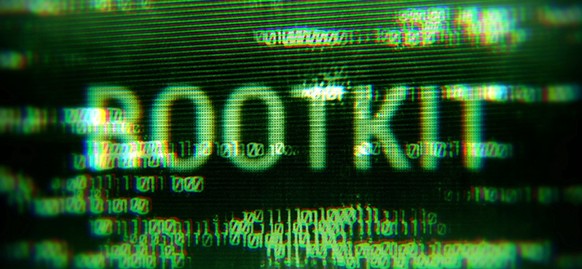Rootkit Scanner: Detection and Removal
What is a Rootkit Scan?
Rootkit scans are the best attempt to detect a rootkit infection, possibly initiated by your antivirus solution. The challenge you face when a rootkit infects our PC is that your operating system may not necessarily be reliable in identifying the rootkit. They are quite devious and good at camouflage. If you suspect a rootkit virus, Rootkit Scanner Scannerone of the best strategies to detect the infection is to shut down the computer and run the scan from a known clean system.
Rootkit scans also look for signatures, the same way they detect viruses. Hackers and security developers play this cat-and-mouse game to see who can find new signatures faster. A sure-fire way to find a rootkit is to perform a core dump scan. You can always see the instructions a rootkit performs in memory, and this is a place it can’t hide.
 Click here to download Free RAM Free Antivirus
Click here to download Free RAM Free Antivirus
What are the Different Types of Rootkit?
There are different types of Rootkit viruses such as rootkits, firmware rootkits, kernel-level rootkits, and application rootkits.
BOOTKIT
This is a type of malicious infection that targets the Master Boot Record located on the computer’s motherboard.
FIRMWARE ROOTKITS
This type of virus hides in the hardware of a computer system such as a network card.
How Do Systems Become Infect with Rootkits?
It can be difficult to detect and remove rootkits. There is not a wide variety of off-the-shelf products that can completely find and remove rootkits from a system. However, there are a number of ways that users can search for a rootkit on an infected machine. These include:
- Behavior-based methods: Use behavior-based methods to check for strange behavior that could lead to a rootkit on your computers, such as slow operating speeds, strange network traffic, or other strange, non-normal patterns of behavior for your computer.
- Core dump analysis is an effective way to detect recruits lurking in system memory. By analyzing the memory dump data, you should be able to locate it.
- Signature Scan – Rootkit scans will look for signatures left behind by hackers and identify if there is any foul play on the network. They should be run on a clean, separate computer when an infected computer is powered off.
Computer systems can be infected with rootkits in a number of ways. One of the most common ways to infect systems with a rootkit is to visit a malicious website that exploits another vulnerability residing on the user’s computer system and installs the rootkit. It can also happen if the user connects an infected USB drive or other media container to the system that exploits a known or unknown vulnerability and infects the system with the rootkit. Viruses and other malware also play a role in the rootkit scenario. Rootkit Scanner Many rootkits include commands to download the rootkit from a remote source and install it using the user’s technology.
Well-Known Rootkit Examples
- Lane Davis and Steven Dake – wrote the first known rootkit in the early 1990s.
- NTRootkit – one of the first malicious rootkits targeting the Windows operating system.
- HackerDefender – this early trojan modified / upgraded the operating system to a very low level of function calls.
- Machiavelli – the first rootkit targeting Mac OS X appeared in 2009. This rootkit creates hidden system calls and kernel threads.
- Greek wiretapping – In 2004/05, intruders installed a rootkit that targeted Ericsson’s AX PBX.
- Zeus- first identified in July 2007, is a Trojan horse that steals banking information by recording keystrokes and entering forms.
- Stuxnet – the first known rootkit for industrial control systems
- Flame – a computer malware discovered in 2012 that attacks computers running the Windows operating system. It can record audio, screenshots, keyboard activity, and network traffic.
Rootkit Detection
It is difficult to detect rootkits. There is no commercial product available that can find and remove all known and unknown rootkits. There are different ways to find a rootkit on an infected machine. Detection methods include behavior-based methods (for example, Rootkit Scanner finding strange behavior on a computer system), signature analysis, and core dump analysis. Often the only option to remove a rootkit is to completely rebuild the compromised system.
Rootkit Protection
Many rootkits enter computer systems by being superimposed on trusted software or a virus. You can protect your system from rootkits by making sure it is kept up to date against known vulnerabilities. This includes fixes for your operating system, applications, and up-to-date virus definitions. Do not accept files or open email attachments from unknown sources. Be careful when installing the software and read the end-user license agreements carefully.
This article covers the answers to some of your frequently asked questions:
People May Also Like…
Data protection
What is the data protection Data protection has grown to be of utmost importance to both individuals and organizations in the connected. world of today, where information travels quickly across many digital
What is a security software
Security software It is impossible to overstate the value of strong security software in today's digital world. Individuals and organizations must take proactive measures to safeguard their sensitive data and defend against
Website reputation analysis
Website reputation analysis Websites are incredibly important for establishing an online presence for businesses, organizations, and people in the modern world. Analysis and evaluation of a website's reputation are crucial because there are
What is a Virtual private network (VPN)
What is a virtual private network (VPN) Virtual private network (VPN) have become an essential tool for both individuals and businesses in a time when online privacy and security are of the







